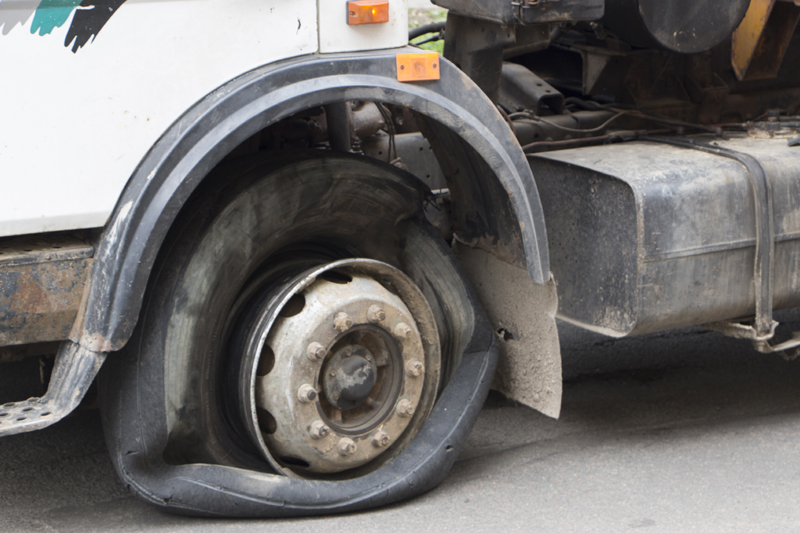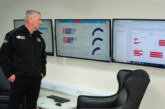
CVW speaks to Steve Howat, General Manager – Technical Services, Continental Tyres UK about the safety implications of Tyre Pressure Monitoring Systems.
How much of a problem is incorrect tyre pressure for UK fleets?
Steve Howat (SH): Incorrect tyre pressure costs fleets money; that is the bottom line. An underinflated tyre creates more rolling-resistance, raising fuel consumption, and fuel is the biggest budgetary expense for any fleet, by far. A Tyre Pressure Monitoring System (TPMS) is a proven way to help lower fuel usage, with technology developments in this area now creating affordable solutions for any fleet operator.
TPMS will undoubtedly provide a financial return in a relatively short time frame, most fleets recognise this, but the industry operates within very tight financial margins. UK fleets are under extraordinary pressure to manage costs, in a highly competitive and regulated market.
What can fleets do to address these problems?
SH: TPMS is a legal requirement for passenger cars, but it isn’t on trucks, partly because it poses some technical issues at OE level. For example any TPMS system in a truck must link and talk to the system used in the trailer it tows. This is proving far more successful at aftermarket level, via retrospectively fitted systems.
The first step is for fleets to really understand what their fuel consumption is, and monitor it accurately, because unless you have that information, you can’t see what influence correctly inflated tyres will have on fuel costs. Tyre mileage should also be monitored. Tyre pressure monitoring is not just about preventing blow-outs – underinflated tyres have to flex more and work harder. This extra flex creates higher tyre distortion, and that creates greater tyre wear which ultimately decreases tyre life.
Properly inflated tyres increase tyre lifespan. A tyre which is 20% under-inflated results in a loss of mileage of around 18% – so around a fifth of its total mileage. And 20% is not a dramatic under inflation figure, we regularly find tyres which are 40% or 50% under inflated and their loss of mileage will of course be far greater.

What are the safety implications of incorrect tyre pressure management for drivers?
SH: The latest Highways England figures show there were 61,405 wheel and tyre related incidents on major UK roads between April 2013 and September 2014, and of those 9% were blowouts. More than 35%, or 21,752 incidents, were caused by punctures and 29% by flat tyres.
It is exceptionally rare for a tyre to hit something sharp on the road and suffer an immediate failure, usually it is a very gradual loss of pressure, and this is why TPMS really works. TPMS can be integrated into telematics systems, to send information back to a base, giving operators enough time to manage the problem and keep the truck on the road. The systems help transport managers see pressure degradation occurring, and the time scale, so can choose to wait for the driver to get to their next delivery, or a safe easy to access point, and assess the problem.
Operators can decide at what point they advise the driver of the issues, for example if they need to immediately pull over, or if they should divert. Live monitoring allows better planning. Zipper failure is one of the major safety issues when the reinflation of a tyre occurs after a puncture repair has been conducted. A tyre dealer replacing a tyre which has been severely stressed because it has been running under-inflated or because a penetration has occurred in the tread causing gradual inflation loss, has no idea how long that tyre has been running in that condition and therefore cannot get a picture of how stressed that tyre is.
Tyres are inflated at extremely highpressures of 125/130 PSI. When a tyre is re-inflated during repair if it has experienced long-term under-inflation, it can cause an instantaneous break in the mid-side-wall area, causing zipper failure and immediate loss of pressure. This is incredibly dangerous and can result in real damage to the technician conducting the repairs. A tyre fitted with TPMS will give the tyre fitters a much fuller picture of the condition of the tyre. They will have a full indication of how long the tyre has been running under-inflated, and can therefore make an informed decision about whether or not the tyre is past the point of repair.
Can TPMS systems be integrated into existing telematics?
SH: Most vehicles do have some form of telematics system, so for many fleets it is logical to integrate into existing telematics, and monitor pressure at base, to avoid additional driver distraction in the cab. Integration into telematics, either via OEM developed systems or retrospective units is something which Continental Tyres is working on with a variety of technology partners. Telematics now provide a broad spectrum of operational data and we predict that tyre temperature and inflation data will become a standard addition to this in the near future. We are already seeing simple text and email alerts becoming a useful additional function when a tyre reaches an underinflation or temperature threshold. This helps give fleet managers a tool to instigate further interrogation of the vehicle and understand how quickly the tyre is losing pressure and what specific action is required.
Which emerging technologies are tyre manufacturers investing in, to further improve TPMS?
SH: Connected motorways are going to prove very useful for TPMS. Highways England is already exploring how TPMS can work within these new connected routes. For example, traffic management systems could be linked, in order that a trigger is sent when a tyre is going down, and a gantry warning sign could advise the driver. With TPMS the existing pressure sensors are just the start. The next step will be more sophisticated sensors measuring tread depth and lateral force – true intelligent tyres, allowing operators to fully understand how the tyre is being driven, and where potential failures may occur.









